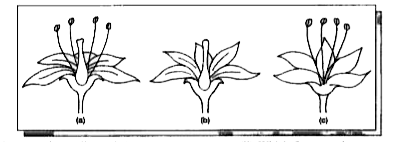Identify the following terms by matching them with appropriate description, write down the letter of the correct answer using each letter only once. A. Anode B. Cation C. lon D. Anion E. Cathode.
Positive particle
Step by step video & image solution for Identify the following terms by matching them with appropriate description, write down the letter of the correct answer using each letter only once. A. Anode B. Cation C. lon D. Anion E. Cathode. Positive particle by Chemistry experts to help you in doubts & scoring excellent marks in Class 10 exams.
Topper's Solved these Questions
- BOOK - ICSECHAPTER - ELECTROLYSISEXERCISE - Additional questions22videos
ELECTROLYSIS
- BOOK - ICSECHAPTER - ELECTROLYSISEXERCISE - Unit Test Paper 5 - Electrolysis18videos
ELECTROLYSIS
- BOOK - ICSECHAPTER - ELECTROLYSISEXERCISE - ADDITIONAL QUESTIONS FOR PRACTICE49videos
ELECTROLYSIS
- BOOK - ICSECHAPTER - CHEMISTRY-2015EXERCISE - SECTION-II (40 Marks) Attempt any four questions from this Section.49videos
CHEMISTRY-2015
- BOOK - ICSECHAPTER - METALLURGYEXERCISE - UNIT TEST PAPER 6 - Metallurgy (Select the correct answer from the list A,B,C & given in each statement.)5videos
METALLURGY
Similar Questions
Identify the following terms by matching them with appropriate description, write down the letter of the correct answer using each letter only once. A. Anode B. Cation C. lon D. Anion E. Cathode.
Positive or negative particleView SolutionIdentify the following terms by matching them with appropriate description, write down the letter of the correct answer using each letter only once. A. Anode B. Cation C. lon D. Anion E. Cathode.
Negative particleView Solution
Knowledge Check
- Question 1 - Select One
Select correct answers from the choices A, B, C, D which are given. Write down only the letter corresponding to the correct answer.
Which of the following oxides is amphoteric?AZnOBCuOCFeODCaO - Question 2 - Select One
Select correct answers from the choices A, B, C, D which are given. Write down only the letter corresponding to the correct answer.
Which salt forms coloured solution when dissolved in water?Acalcium chlorideBzinc carbonateCcopper sulphateDcalcium carbonate - Question 3 - Select One
Select correct answers from the choices A, B, C, D which are given. Write down only the letter corresponding to the correct answer.
A deep blue colour appears when excess of ammonium hydroxide is added to a solution containing the cation:
A I 3 + ; F e 2 + ; Zn2+;Cu^(2+) ;AAI3+BFe2+CZn^(2+)DCu^(2+)
Identify the following terms by matching them with appropriate description, write down the letter of the correct answer using each letter only once. A. Anode B. Cation C. lon D. Anion E. Cathode.
Negative electrode.View SolutionIdentify which of the following terms matches with the appropriate descriptions 1 to 5
A: Hydracid (B) Monobasic acid (C ) Less volatile acid ( D) Weak acid (E ) Tribasic acid (F ) Dibasic acid (G ) More volatile acid
1. An acid having basicity 1 and having only one replacement hydrogen ion per molecular of the acid.
2. An acid which dissociates to give a low concentration of H+ ions
3. An acid containing hydrogen and a non-metallic element other than oxygen.
4. The type of acid which generally displaces another acid when the acid is heated with a salt
5. The type of acid which reacts with a base to give an acid salt and a normal saltView SolutionThe given figure shows the position of a medium particle at t=0, supporting a simple harmonic wave travelling either along or opposite to the positive x-axis.

(a) write down the equation of the curve.
(b) find the angle θ made by the tangent at point P with the x-axis.
(c ) If the particle at P has a velocity vpm/s, in the negative y-direction, as shown in figure, then determine the speed and direction of the wave.
(d) find the frequency of the wave.
(e) find the displacement equation of the particle at the origin as a function of time.
(f) find the displacement equation of the wave.View SolutionStudy the three flowers (a), (b) and (c) in the following figures. Then answer the questions (by writing letter )

Which flower makes pollen only?View SolutionStudy the three flowers (a), (b) and (c) in the following figures. Then answer the questions (by writing letter )

Which flower makes eggs only?View Solution

